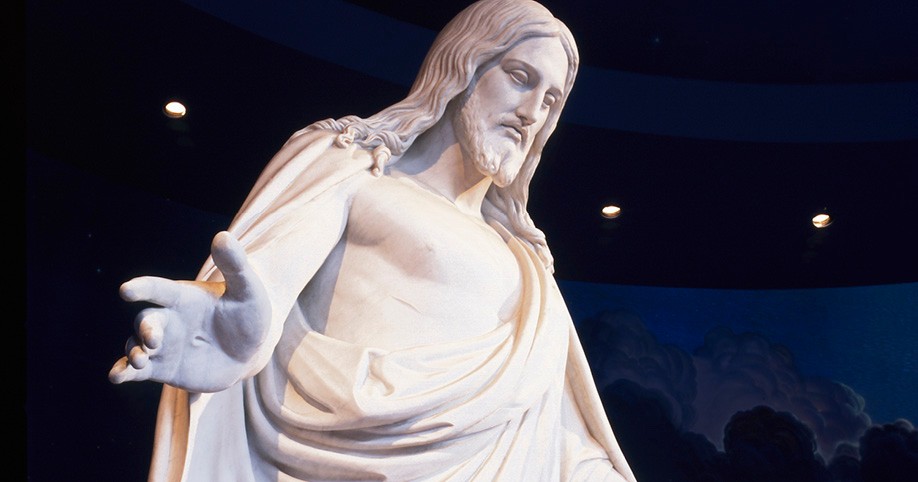
Many outside of The Church of Jesus Christ of Latter-day Saints might have wondered: what are Mormon garments? The white underclothing worn by many faithful adult members of the Church may seem mysterious or unfamiliar. Known by Latter-day Saints as the temple garment, this clothing is more than just fabric or a tradition. Mormon garments are deeply symbolic, sacred, and meaningful to Latter-day Saints who have chosen to make covenants with God in LDS temples.
Though garments are worn privately and discreetly beneath everyday clothing, their significance is profound. They represent spiritual commitment, divine protection, and a constant connection to God’s covenants and promises. Wearers of the garment are reminded day and night of their relationship with Jesus Christ and His atonement for them.
A Symbol of Commitment
The garment is not merely traditional clothing or a religious uniform. Rather, it is “an outward expression of an inward commitment,” as described by LDS Church leaders. Members of the Church who have participated in a ceremony called the endowment in a Latter-day Saint temple wear the garment day and night as a personal reminder of the sacred covenants they made with God as part of the ceremony.
This practice of wearing symbolic clothing echoes divine patterns established throughout history. From the coats of animal skins God gave Adam and Eve when they left the Garden of Eden to the priestly vestments worn in the Old Testament by those who served in the tabernacle, God has often provided sacred clothing to mark covenant relationships and spiritual responsibilities. The temple garment follows this same biblical pattern.
So why do Mormons wear garments? They wear them as a physical sign to themselves of their personal devotion to God, their discipleship in Jesus Christ, and their responsibility to live a life of purity, righteousness, and modesty.
The Armor of God
One of the most common scriptural metaphors used to describe the symbolic purpose of the Mormon sacred garment is that of the “armor of God.” In Ephesians 6, the Apostle Paul urges followers of Christ to take upon themselves spiritual armor to protect against evil: the belt of truth, the breastplate of righteousness, the shield of faith, the helmet of salvation, and the sword of the Spirit.
Latter-day Saints understand the Mormon Church garments as a literal part of that armor—a sacred shield that reminds them to live righteously and helps protect them spiritually. Elder Carlos E. Asay, a leader in the Church, explained that in a spiritual battle against evil, the garment serves as a constant, tangible piece of that armor. When worn faithfully, it can help the wearer resist temptation, withstand evil influences, and stay grounded in gospel principles taught by Jesus Christ.
However, this protection is not automatic, and it is spiritual rather than physical. There’s a common misconception outside the Church that temple garments are “Mormon magic underwear,” but this term is both inaccurate and disrespectful. As prominent LDS scholar Hugh Nibley wrote, “The garment is inadequate without the thing that it signifies.” The spiritual blessings of the garment are realized only when the wearer lives true to the covenants it represents. In this way, the garment is a symbol of personal integrity, not a magical superstition.
A Personal and Sacred Trust
Because of its sacred nature, the way the garment is worn and treated matters deeply. It is not “magic underwear,” and is intended to be regarded with reverence. Church leaders have taught that the garment should be worn throughout life as underclothing—both day and night—as a sign of respect, fidelity, and the wearer’s reliance on God. The First Presidency at the head of the Church of Jesus Christ of Latter-day Saints has emphasized that the way members choose to wear Mormon the garment reflects their spiritual maturity and how seriously they regard their covenants.
Though no strict dress code is given in the Church beyond basic standards of modesty, the garment invites members to live by principle rather than by rigid rule in the way they dress. Some trendy fashion items like cropped shirts and very short pants or skirts are not compatible with the garment. However, from a Latter-day Saint perspective, the decision to keep wearing the garment faithfully, even when inconvenient, becomes a daily act of spiritual discipline and personal honor.
Garments as a Reminder of Jesus Christ
Most importantly, the temple garment functions as a sacred reminder of Jesus Christ for Latter-day Saints. Just as the Sabbath, the sacrament of communion, and ancient rituals like the Passover were instituted by God in the Bible to help people remember Him, so too does the garment serve as a personal symbol of a Latter-day Saint’s relationship with Jesus.
In moments of temptation, discouragement, or spiritual struggle, the presence of the garment can help anchor individuals to the covenants they’ve made. It symbolizes purity, obedience, and a life aligned with the gospel of Christ. Being covered by Mormon the garment reminds the wearer that their sins are “covered” by the atoning blood of Christ and His grace. It represents their desire to resist temptation to sin and become a true follower of Jesus.
Russell M. Nelson, the current president of the Church, has said that “wearing the temple garment has deep symbolic significance. It represents a continuing commitment.” That commitment has two parts: God’s commitment to provide a Savior, and Latter-day Saints’ commitment to follow Him.
A Blessing in Mortality
Though garments are deeply sacred, they are also practical. The Church manufactures them with comfortable, contemporary fabrics to meet the needs of daily life. Their availability reflects the Church’s understanding that discipleship must be lived in the real world—with jobs, families, travel, and recreation. Garments can be removed for activities where it wouldn’t be reasonable to keep them on, such as swimming, showering, or intense physical exercise.
Nonetheless, Church leaders have repeatedly affirmed that members should not seek to find excuses to remove the garment, but instead should seek guidance from the Holy Ghost and honor the spirit of their covenants.
Eternal Significance
Ultimately, the meaning of the Mormon sacred garment is about the eternal identity and destiny of God’s children. It reminds wearers of the Savior’s love, of their own divine worth, and of the glorious promises extended to the faithful. In scriptural symbolism, garments represent righteousness, salvation, and the purified soul: “He hath clothed me with the garments of salvation, he hath covered me with the robe of righteousness” (Isaiah 61:10).
In the Book of Revelation, it is said that those who are faithful “shall walk with me in white: for they are worthy” (Revelation 3:4). The temple garment is a constant invitation to Latter-day Saints to become that worthy disciple—to walk with God, even in a world filled with darkness.
Though simple in appearance, Mormon garments are anything but ordinary. They are sacred, personal, and profoundly symbolic. For those who wear them, they serve as a daily testament of faith, a quiet shield of protection, and a holy reminder of Jesus Christ, who makes all covenants—and all eternal blessings—possible.

By Todd Noall, Source Expert
Todd Noall is an author and religious scholar at Mormonism Explained with a focus on the history and theology of religion.

Fact Checked by Mr. Kevin Prince, Source Expert
Kevin Prince is a religious scholar and host of the Gospel Learning Youtube channel. His channel has garnered over 41,000 subscribers and accumulated over 4.5 million views. Mr. Prince also created the Gospel Learning App, a reliable platform where individuals seeking truth can access trustworthy answers to religious questions from top educators worldwide.
About Mormonism Explained
Mormonism Explained is a resource that was designed to provide objective and factual information about Mormonism, its history, doctrines, and policies. Our team of researchers consults experts and primary sources to present factual information on a variety of topics relevant to the Mormon Church.
Tags
